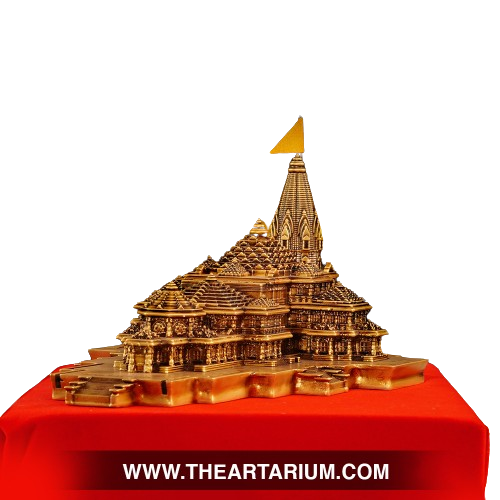Featuring almost 400 pillars, 44 doors, and a mesmerizing idol of Ram Lalla - the majestic Ram Mandir was finally inaugurated on 22nd January 2024, by honorable Prime Minister Narendra Modi. Joining him were the Chief Minister of Uttar Pradesh, Yogi Adityanath, religious figures, Bollywood celebrities, and other politicians.
Ram Mandir is not just a religious building but rather a testament to years of hard work, perseverance, and legal battles. Today, as we witness this remarkable moment, let's take a look back at the 500 years of struggle that led to the construction of Ram Mandir.
1528: Construction of Babri Masjid
The Ram Mandir movement started with the construction of Babri Masjid by Mir Baqi, a chief of the Mughal emperor, Babur in 1528. What set the stage for disputes between Hindus and Muslims was the fact that the mosque was built over the ruins of a Hindu temple.
1751: The Maratha Claim
Balbir Punj, famous writer, and former Rajya Sabha member from the Bhartiya Janta Party (BJP) made a controversial statement in his book Tryst with Ayodhya: Decolonisation of India stating that Marathas are seeking control of Ayodhya, Mathura and Kashi. This sparked several conflicts later on in the realm.
1858: Nihang Sikhs’ Claim
In the year 1858, Nihang Baba Fakir Singh Khalsa along with 25+ Nihang Sikhs took over Babri Masjid claiming that it was the birthplace of Ram. and it was after this incident that the debates over the ownership of the disputed land fired up.
1885: Filing of the First Legal Claim

In 1885, Raghubar Das, a priest belonging to the Nirmohi Akhara, filed a legal suit asking for permission to build a temple in the front courtyard of Babri Masjid. Although the request was dismissed, it started a legal battle and fueled the dispute. Meanwhile, the British administration set up a fence around the disputed land marking two separate areas dedicated for worship for both Hindus and Muslims. This arrangement remained intact for almost 90 years.
Also Read Ram Lalla Idol Statues History & Symbolism- Why is Ram Lalla’s Murti Black?
1949: Discovery of Ram Lalla Idol inside Babri Masjid
On the night of December 22, 1949, certain Ram Lalla idols were found inside the Babri Masjid. This intensified the already brimming religious sentiments of both communities further leading to legal battles concerning the ownership of the disputed land.
The Hindus claimed that the idols themselves appeared inside the mosque and were not placed by anyone. It was after this incident that the property dispute was taken to court for the first time.
1950 - 1959: Surge in Legal Suits & Claims
In the following years, the legal suits hiked up. Claims from both communities were made with Nirmohi Akhara seeking permission to worship the found idols and the Sunni Central Waqf Board seeking ownership of the site.
1986 - 1989: Unlocking of Babri Masjid
In 1986, the Congress government (then led by Rajiv Gandhi) made a controversial decision to unlock the Babri Masjid, allowing Hindus inside to worship Lord Ram's idols. This became a crucial decision in the Ram Mandir narrative.
Moving ahead, in 1990, the Vishwa Hindu Parishad laid out a deadline for the construction of the Ram Mandir. During this period, LK Advani also began a Rath Yatra escalating the demand of building a temple.
1990: Rath Yatra & Demolition Attempt
Amidst the ever-rising political tension, L.K. Advani’s Rath Yatra was set out to mobilize support for building a temple. Although it turned out to be a failed attempt, it turned out to be a major turning point.
1992: The Rigorous Demolition
The year 1992 witnessed a major event on December 6, during which thousands of activists including the ones from Shiva Sena and Vishwa Hindu Parishad, demolished the Babri Masjid. This incident led to communal riots all around the country, resulting in the loss of thousands of innocent lives.
2002: Godhra Train Fire
The entire S-6 coach of the Sabarmati train carrying Kar sevaks was set on fire near the Godhra station and around 58 people were burnt alive. This incident triggered riots in Gujarat, claiming a loss of over 1,000 lives.
2003: Excavation of Archaeological Survey of India (ASI)
In 2003, the Archaeological Survey of India surveyed the disputed land reporting the instances of significant Hindu structures underneath the mosque. However, the Muslim community debated against these findings leading to ongoing arguments concerning the historical interpretation of the land.
Also Read The Ayodhya Dispute and Ram Lala Murti: A Journey through History
2010: Division of Land
Considering the endless noise and arguments around the disputed land of Ayodhya, the Allahabad court finally ruled out its judgment declaring the division of the disputed land into three parts. One-third of it was given to Hindu Mahasabha (representing Ram Lalla), one-third to the Islamic Waqf Board, and the remaining was allotted to Nirmohi Akhara. However, both the Hindu Mahasabha and the Sunni Waqf Board subsequently approached the Supreme Court in December, revolting against the decision of the High Court in December.
2011: All the Three Parties Approached the Supreme Court
In 2011, all three parties including the Hindu Mahasabha, Nirmohi Akhara, and the Sunni Waqf Board filed a plea against the verdict passed by the high court. Nonetheless, the Supreme Court held the orders of the High Court to split the land into 3 parts.
2019: Supreme Court Judgement
In 2019, a five-judge Supreme Court panel was formed which included the former Chief Justice of India, Ranjan Gogoi, Justice SA Bobde, Justice DY Chandrachud, Justice Ashok Bhushan, and Justice Abdul Nazeer. The panel ruled out a verdict declaring the disputed land of 2.7 acres to be allotted to a trust that’ll be established by the Indian Government for the construction of the Ram Mandir. Moreover, the court also ordered the government to issue 5 acres of land separately to the Sunni Waqf Board for the construction of the mosque.
Moving on, a trust was formed with a total of 15 members under the name of Shri Ram Janambhoomi Teerth Shetra for the construction of Ram Mandir.
2020: Establishing of Ram Mandir Foundation Stone
In August 2020, the foundation of Ram Mandir was laid down by Prime Minister Narendra Modi. Meanwhile, he also released a plaque and a commemorative postal stamp for Ram Mandir.
2024: Inauguration of Ram Mandir
Finally, the years of struggle and hard work paid off with the consecration ceremony of Ram Lalla on 22 January 2024. Guests from all spheres like Bollywood, politics, and religious figures were invited to this grand event which will forever be marked in the history of India.
Takeaway
So this was a breakdown of the events around the Ram Janambhoomii dispute and the construction of the Ram Mandir. The battle was long but was worth every attempt and struggle. Today, Ram Mandir stands tall as a pride of India secured by the emotions of thousands of devotees.
Frequently Asked Questions (FAQs):
Q. How many years old is the Ram Mandir case?A. The Ram Mandir case is almost 70 years old.
Q. What was there before Ram Mandir?
A. Before Ram Mandir, Babri Masjid was build up on the Ram Janambhoomi.
Q. What is the lifespan of Ram Mandir?
A. The complete structure of Ram Mandir is constructed using Bansi Paharpur sandstone without any steel reinforcement and is said to last for 1,000 years.
Q. Who opened Ram Mandir?
A. Prime Minister Narendra Modi inaugurated the Ram Mandir on 22 January 2024.
Q. Who designed Ram Mandir?
A. Architect Chandrakant B Sompura designed the Ram Mandir along with his son Ashish who majorly contributed to bringing his vision to life.
Q. What is the old name of Ayodhya?
A. Ayodhya was previously known as Saket.
Q. Who donated the most money for the Ram Mandir?
A. The spiritual Guru Morari Bapu donated the highest amount i.e., INR 11.3 crore for the construction of Ram Mandir.
Q. Who ruled Ayodhya before Rama?
A. Dashratha, (father of Lord Rama) was the King of Ayodhya before Rama.
Q. Is Babri Masjid still there?
A. No, the Babri Masjid was demolished by a Hindu activist mob in the year 1992.
 Proudly Made In India
Proudly Made In India



